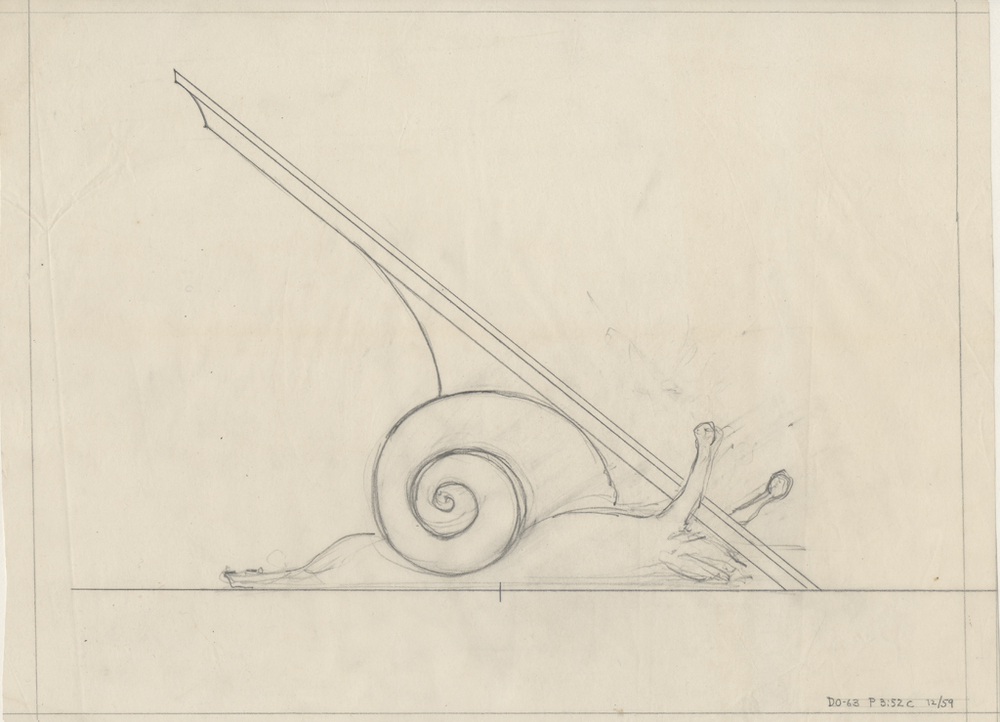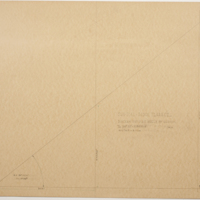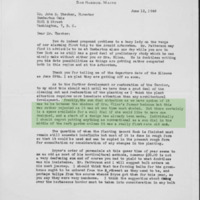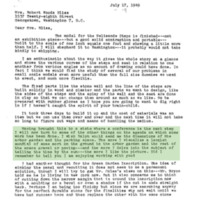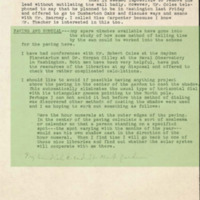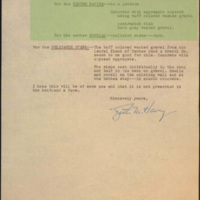Arbor Terrace
The Sun Dial
While a frequent topic of correspondence, the sundail was ultimately unrealized in the Arbor Terrace renovation of 1955 and afterwards. Fortunately, letters and drawings remain from Ruth Havey, Mildred Bliss, and Beatrix Farrand that help us imagine what the feature might have looked like.
Beatrix Farrand, June, 1946 to John Thatcher:
Frankly, the sun dial situation is as we have spoken of it was to be between the windows of Mrs. Bliss's former bedroom but this was rather rejected as it was at one time much shaded. But there certainly is a space available for a wall dial if she would like to have one designed, and a start of a design has already been made. Individually I should regret putting anything as conventional as a sun dial in the middle of the herb garden unless it was a really first rate old one.
Mildred Bliss to Beatrix Farrand, 1949:
Miss Havey has drawn up what I think is a particularly attractive treatment for the arbor terrace itself. This, of course, must await Mr. Thacher's approval. In any event I shall have a flat sun dial put in the centre of the terrace, but since it seems necessary to the Director to suppress flower boarders in that little terrace and a sward is a difficulty and expense, I believe some such treatment as that proposed might work out perfectly and with great charm…
Ruth Havey to Mildred Bliss, 1949:
Paving and Sundial--- Any spare minutes available have gone into the study of how some method of telling time by the sun could be worked into the scheme for the paving here.
I have had conferences with Mr. Robert Coles at the Hayden Planetarium and Dr. Morgan Cilley at the Naval Observatory in Washington. Both men have been very helpful, have put the resources of the libraries at my disposal and offered to check the rather complicated calculations.
I should like to avoid if possible having anything project above the paving in the center of the garden to cast the shadow. This automatically eliminates the usual type of horizontal dial with its triangular gnomon pointing to the North pole. Perhaps I can not avoid it but before this method of dialing was discovered other methods of casting the shadow were used and I am hoping to work out something as follows:
Have the hour numerals at the outer edges of the paving. In the center of the paving calculate a sort of analemma or, calendar so that a person standing on a specified spot---the spot varying with the months of the year--- would see his own shadow cast in the direction of the hour numeral. When I find time I will go back to one of those nice libraries and find out whether the solar system will cooperate with me there…
Ruth Havey, 1953:
I am enclosing the notes I took in Washington November 28th to December 3rd on available materials and methods of paving for the Arbor Terrace/ Byzantine Church/ Garden Melisande Steps. I left a box of stone and concrete aggregate samples with Mr. Kearney covering the ones marked with a red S in the notes. I have been saving these to go over with you sometime in Washington, as it is complicated to try to explain it by mail. But some of it applies to the Byzantine Church Garden and you may want it while Mr. Patterson is there. Briefly it boils down to this: The greatest help came from Mr. J. R. Kennedy of the Early Studio, Inc. (Tel. Republic 1307) who is most anxious to do this work and has offered to make up samples of paving in any color or textures we might want (letter enclosed). …
For the Scrolls---smooth concrete or Crab Orchard Stone---buff or pink (Tennessee Quartzite)
For the CENTER PAVING---in a pattern , concrete with aggregate exposed using buff colored washed gravel contrasted with dark gray washed gravel
For the center SUNDIAL--- polished stone---dard…

